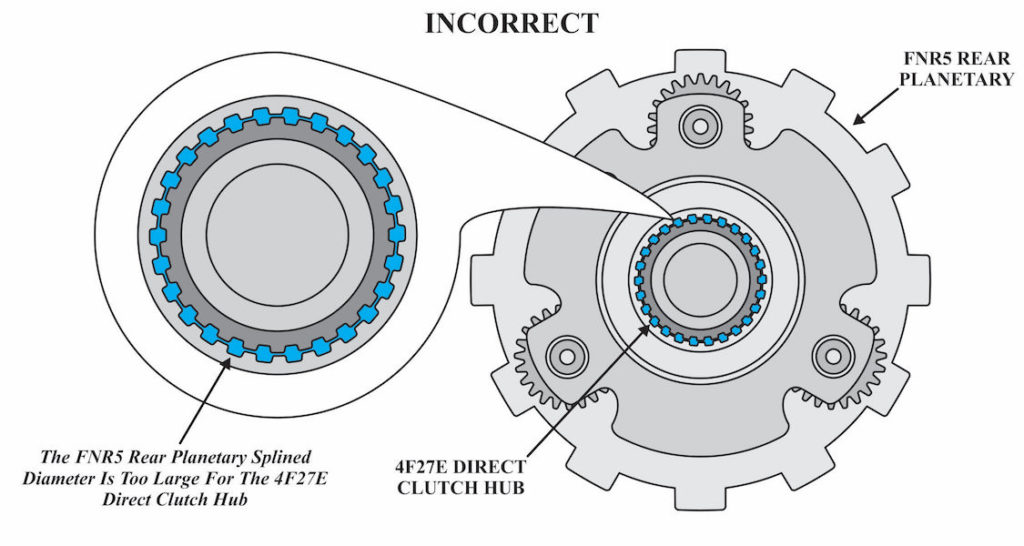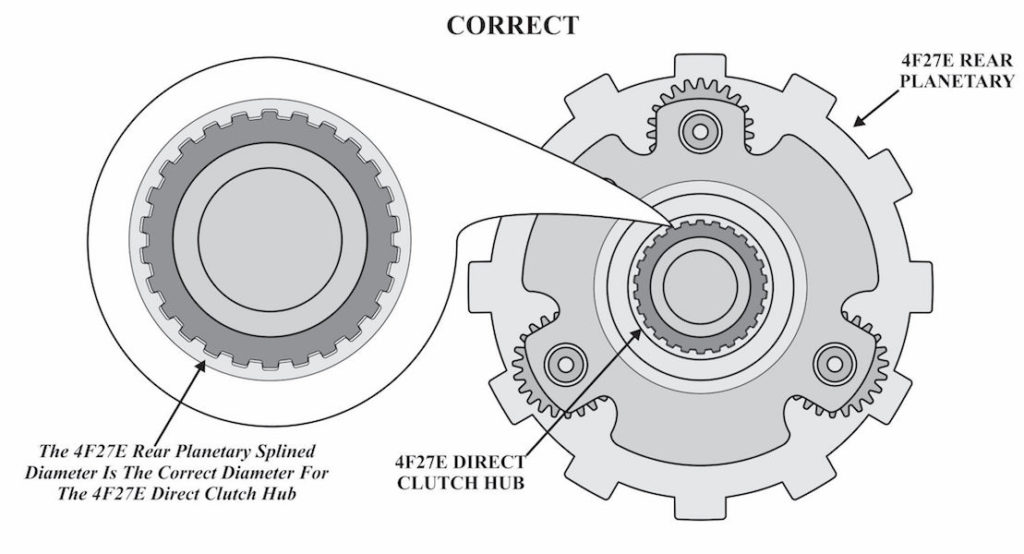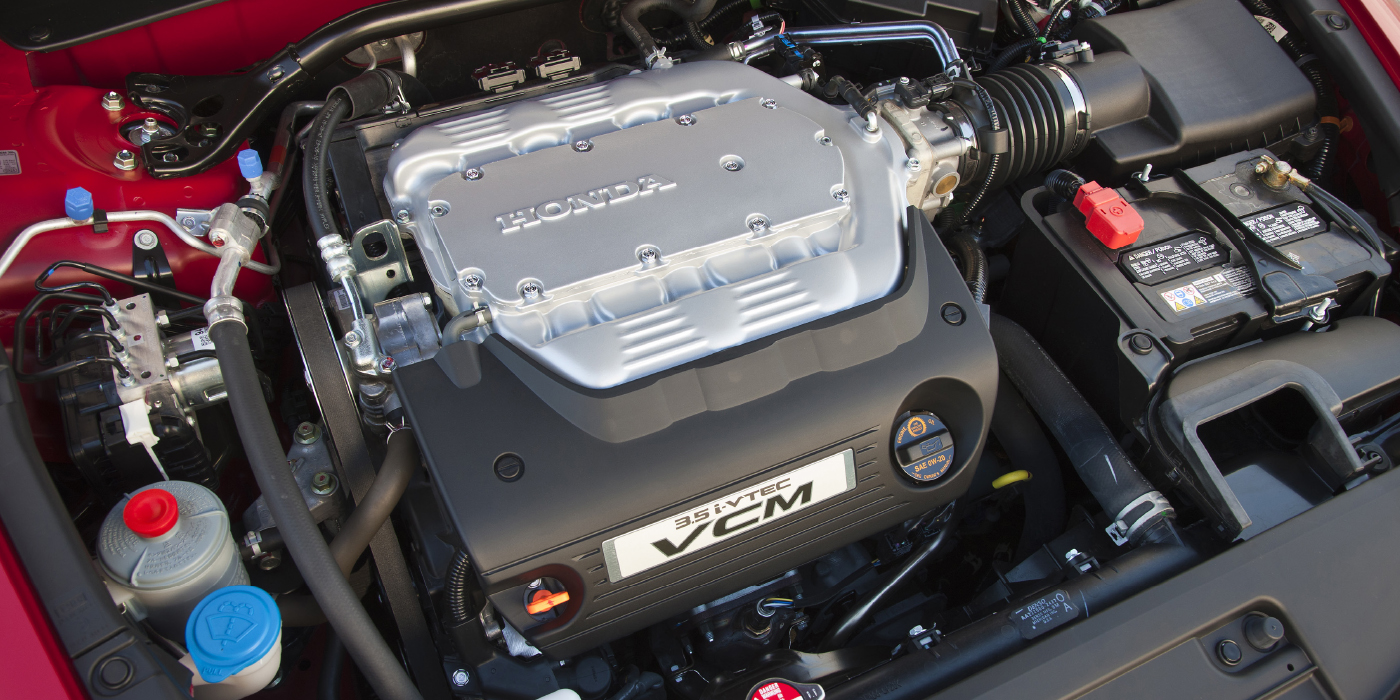Complaint:
The FN4A-EL is Mazda’s name for the 4-speed automatic transaxle transmission developed by Mazda and Ford; Ford’s name for this transmission is 4F27E. A Ford was just overhauled and now has a complaint of a shift from second gear to neutral.
Cause:

This transmission needed to have the rear planetary that splines to the direct clutch hub, refer to figure 2, replaced, a planetary was taken from parts stock and installed. The planetary from the 4F27E requires a direct clutch hub shaft diameter of 1.040” (26.42mm) with 24 splines. The planetary that was installed was actually out of an FNR5 which requires a direct clutch hub shaft diameter of 1.180” (29.97mm) with 25 splines.
The 4F27E clutch hub shaft is too small in diameter to engage the splines of the rear carrier, refer to figure 3, this went unnoticed, therefore the extra spline on the planetary was irrelevant.

Without the rear planetary being driven by the clutch hub, there was no mechanical connection to provide third gear.
Correction:
Exercise care when obtaining similar-looking parts from stock. Once the correct planetary was installed, the vehicle performed normally, refer to figure 4. If this scenario had gone in the opposite direction by trying to install a 4F27E rear planetary in an FNR5, splines would NOT have engaged because of the difference in tooth count and shaft diameter.















